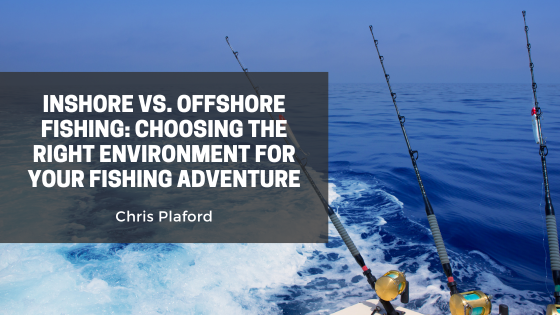Fishing has always been a popular pastime, offering a unique blend of relaxation, excitement, and connection to nature. Whether you’re a seasoned angler or just starting out, one of the most important decisions you’ll make for your fishing adventure is whether to go inshore or offshore. Each environment offers a distinct experience, and the choice ultimately depends on your preferences and goals.
Inshore Fishing:
Inshore fishing takes place in relatively shallow waters close to the shore. These areas include estuaries, bays, flats, and coastal regions. Here are some key aspects of inshore fishing:
- Accessible and Cost-Effective: Inshore fishing is more accessible to most anglers because you don’t need a specialized boat or extensive equipment. A small boat, kayak, or even fishing from the shore can suffice. This makes it a cost-effective option for those on a budget.
- Diverse Species: Inshore southeastern waters are teeming with a wide variety of fish species, including redfish, trout, snook, tarpon, and flounder. You can target specific species based on your preferences and the season.
- Scenic Beauty: Inshore environments often provide breathtaking scenic views, as you’re closer to the coastline and can witness the beauty of the shore and its wildlife.
- Quick Gratification: You’re more likely to have action-packed fishing experiences inshore, as you can catch fish relatively quickly, making it great for beginners or those looking for a quick fishing fix.
- Family-Friendly: Inshore fishing is a fantastic option for families, as it’s generally less physically demanding and can accommodate anglers of all skill levels, including children.
Offshore Fishing:
Offshore fishing, on the other hand, takes you into deeper waters, often miles away from the coastline. It’s an entirely different experience:
- Big Game Fishing: Offshore fishing is renowned for its big game opportunities. You can target trophy species such as marlin, tuna, mahi-mahi, and sailfish. These fish are known for their size and fighting capabilities, providing a thrilling challenge for seasoned anglers.
- Advanced Equipment: Offshore fishing requires specialized boats equipped with advanced technology, including fish finders, GPS systems, and outriggers. This can be a significant investment.
- Full-Day Adventures: Offshore trips often last a full day or more, requiring dedication and stamina. It’s a more immersive experience, allowing you to disconnect from the hustle and bustle of daily life.
- Unpredictable Conditions: The offshore environment can be unpredictable. You’ll need to monitor weather conditions carefully and be prepared for unexpected challenges like rough seas.
- Fulfilling Rewards: While offshore fishing may require more effort, the rewards are often worth it. Landing a massive billfish or tuna can be a once-in-a-lifetime achievement.
Choosing the Right Environment:
The decision between inshore and offshore fishing ultimately comes down to your personal preferences, experience level, and goals. If you’re new to fishing or want a family-friendly outing, inshore fishing is an excellent choice. It’s accessible, affordable, and provides plenty of action.
On the other hand, if you’re an experienced angler seeking a thrilling adventure and the chance to battle powerful oceanic giants, offshore fishing is the way to go. Just be prepared for the commitment and investment it requires.
Both inshore and offshore fishing have their unique charm and appeal. Whichever environment you choose, remember that fishing is not just about catching fish; it’s about enjoying the journey and connecting with nature. So, pick the one that resonates with your soul, and get ready for an unforgettable fishing adventure.
